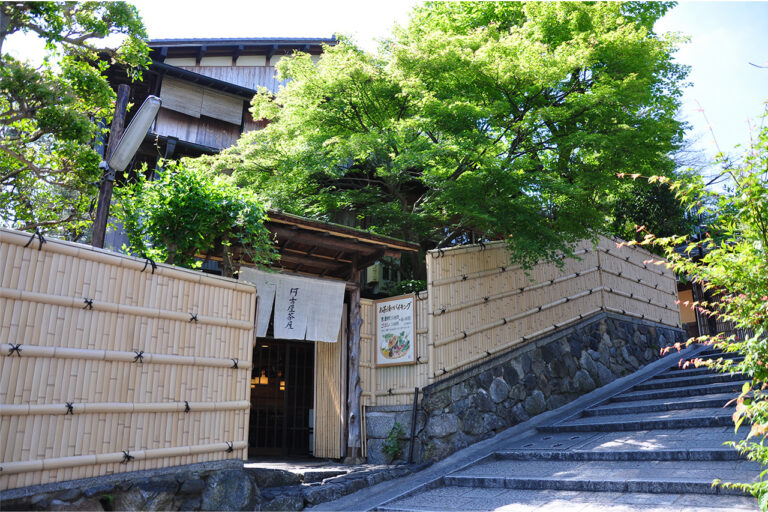
[Akoya Jaya near Kiyomizu-dera Temple is a 2...
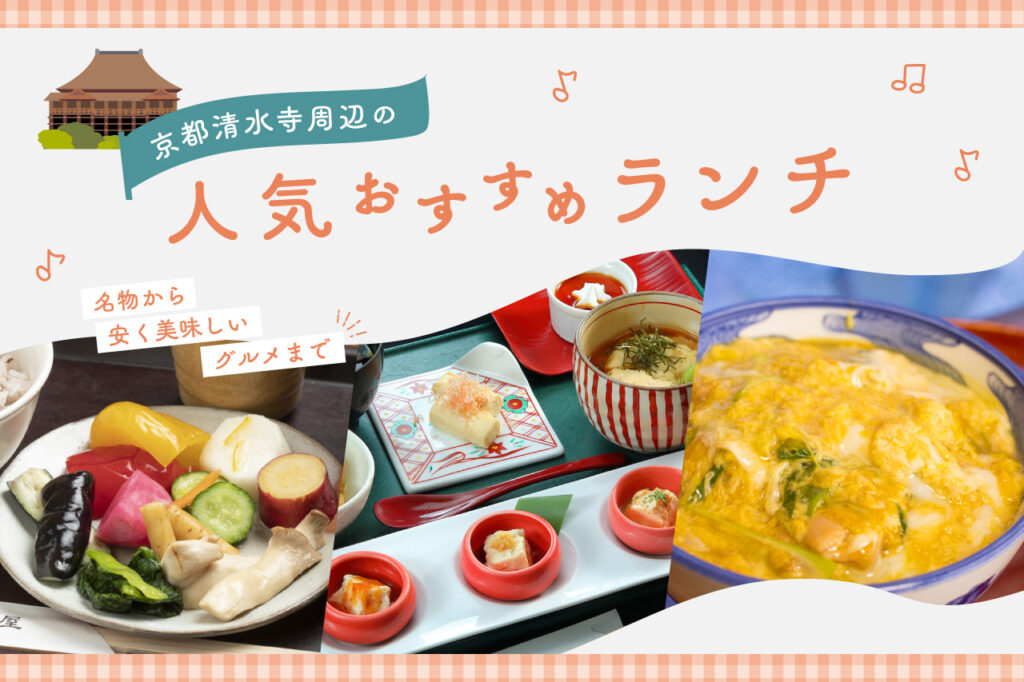

The Kiyomizu-dera area is about to enter its full-blown tourist season. Since the area is expected to become even more crowded, it is important to find a good lunch spot in advance. The editorial department recommends 17 restaurants, including an old-fashioned diner loved by local residents, a yuba restaurant that specializes in yuba dishes made from soybeans, and a restaurant where you can enjoy Italian cuisine just as it is served in the area. Check them out!
The owner, Mr. Ichikawa, welcomes customers with home-roasted coffee, popular fruit sandwiches, sandwiches, and other carefully handmade meals. Three types of coffee blends are on standby, starting at 500 yen, and refills are available for 250 yen.
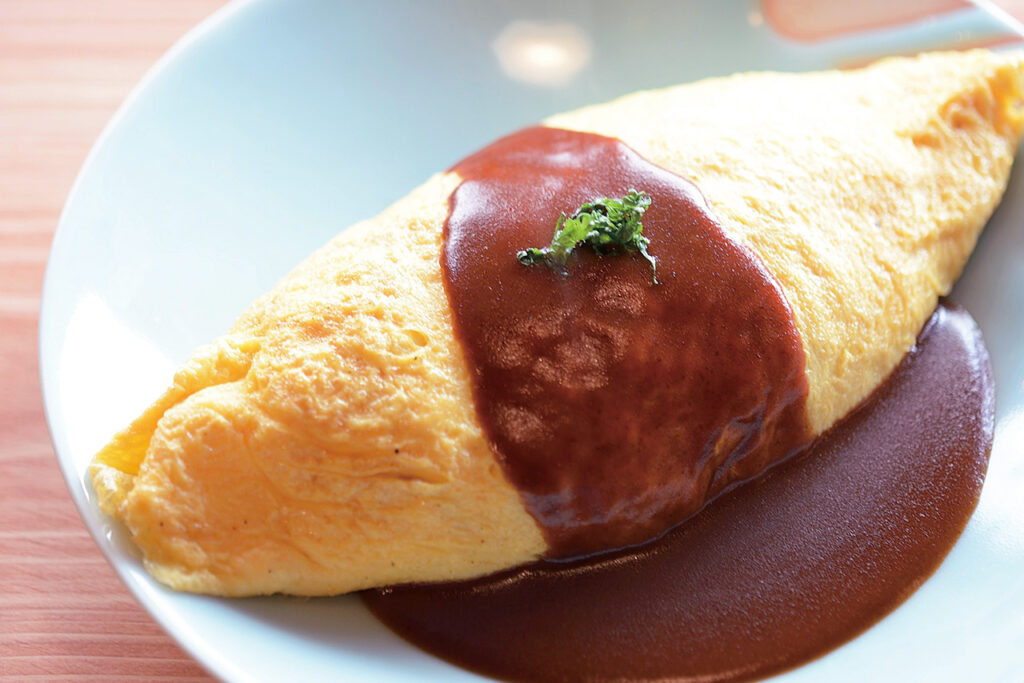
Omelette rice 800 yen. Traditional thinly fried egg type. The rich demi-glace sauce matches the rich butter rice.

After the closure of "Cafe Suzuki," a pure coffee shop loved by locals for 53 years, the owner, Mr. Takenaka, opened a new store in the same location. The atmosphere of the store has remained unchanged since its opening, and it is still a place where former regular customers can gather for a chat. The menu offers a variety of items that are reminiscent of a pure coffee shop, such as soft omelet rice and pudding, and the old-fashioned coffee shop culture has been carefully passed down from generation to generation.
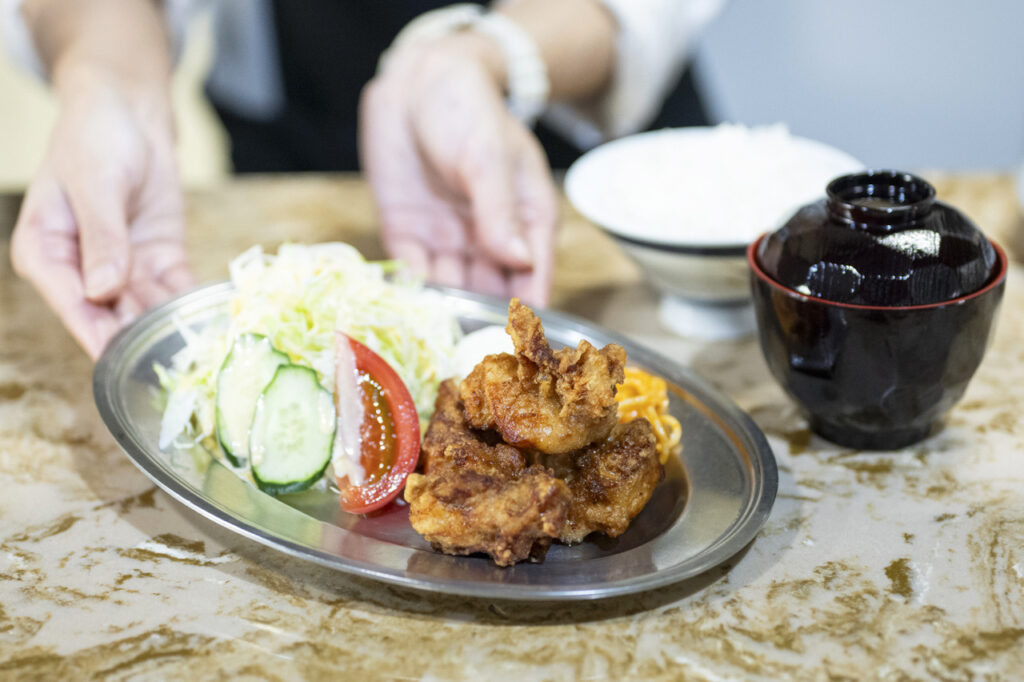
[The fried chicken set meal at Cafe Suzuki is 880 yen, made with a recipe taught by the wife of Cafe Suzuki. The large, juicy fried tofu has a gentle flavor with a hint of ginger.

The owner, Mr. Otake, trained not only in Japanese and French cuisine, but also at a butcher store before opening "Meat & Western Cuisine Otake. The specialty here is hamburgers made without using any glue such as eggs or onions, and the restaurant uses the shank of Danzan Kogen beef from Aichi Prefecture and Sanshu pork from Aichi Prefecture, which are coarsely minced in the restaurant. The hamburger steak is served hot, and the more you bite into it, the more you are impressed by the delicious flavor of the meat.
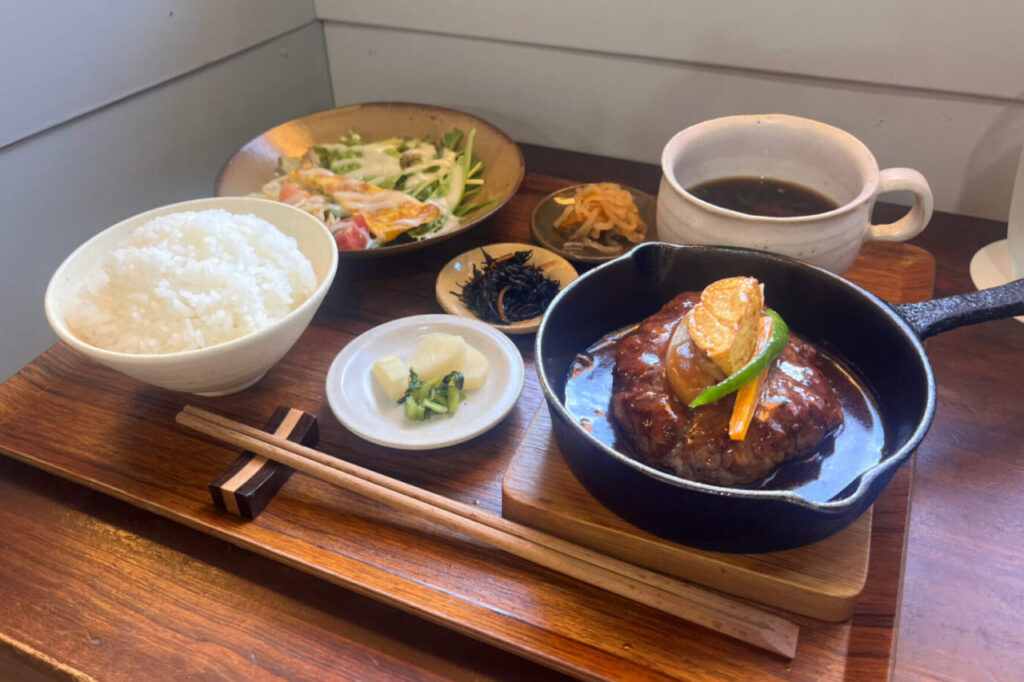
Arabi hamburger steak set (150g) 1,600 yen. Includes rice, salad, miso soup, pickles, and a small bowl of cooked food.

[Akaya Chaya is an ochazuke buffet restaurant located not far from Kodaiji Temple and Kiyomizu-dera Temple. At this restaurant, you can freely eat 20 kinds of pickles with white rice, 16-grain rice, or rice porridge in a buffet style. There are also some unusual pickles such as potatoes and eringi mushrooms. Finish the meal with ochazuke-style pickles and enjoy the rich variety of tsukemono flavors that you cannot taste at home.

The ochazuke buffet with colorful pickles is 1,800 yen per person. Miso soup and monaka with two kinds of bean paste are also included in the buffet!

Gion Shimogawara Hisago is a soba restaurant established in 1930. Among the many dishes on the menu, the most popular is the oyakodon, a bowl of rice topped with chicken and eggs in a broth made from natural kelp and saba-bushi (mackerel bones). The slightly sweet broth soaks into the Kujo leeks and chicken meat, and the aroma of the thick, half-boiled egg and broth is very appetizing. There is often a long line at lunchtime, so it is recommended to visit with plenty of time to spare.
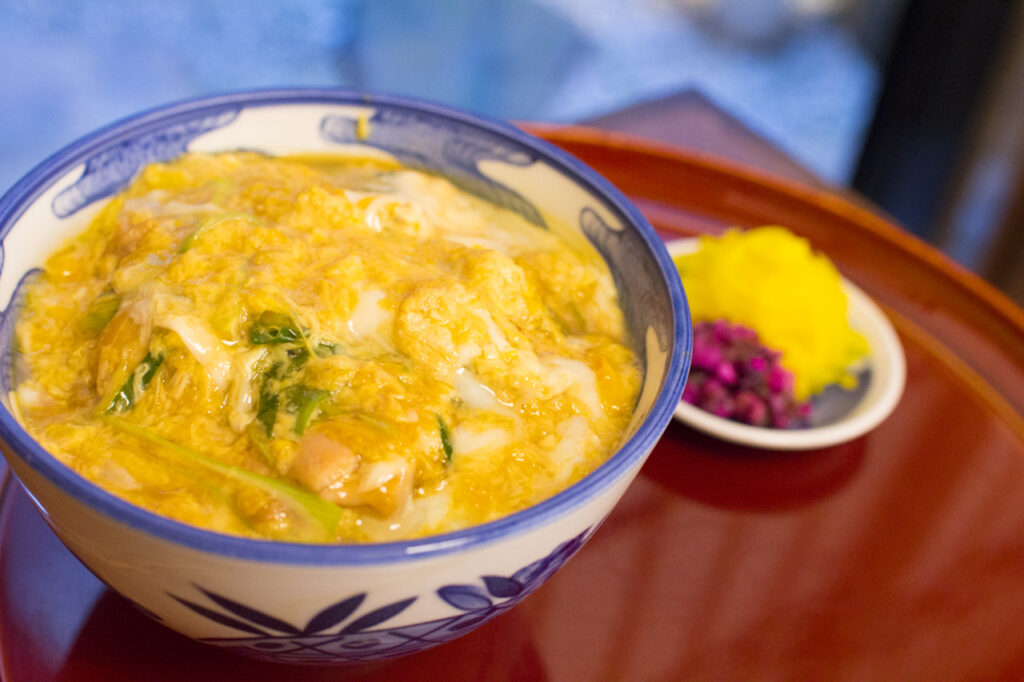
A hearty bowl of oyakodon (rice topped with chicken and eggs) for 1,100 yen. The fluffy half-boiled egg and the slightly sweet broth are a perfect match and can be eaten in small portions.

This restaurant is directly operated by Kyoto Miyama Yuba Yumame, which specializes in handmade yuba, starting from the production of soybeans in Miyama, Kyoto. At this restaurant, you can enjoy dishes made with yuba, created by the chef, who is a dedicated Japanese cuisine chef, and the chef, who has a background in Italian cuisine. The menu is developed with free ideas that are not limited to Japanese cuisine, and is sure to make you realize once again the original sweetness and deliciousness of yuba.
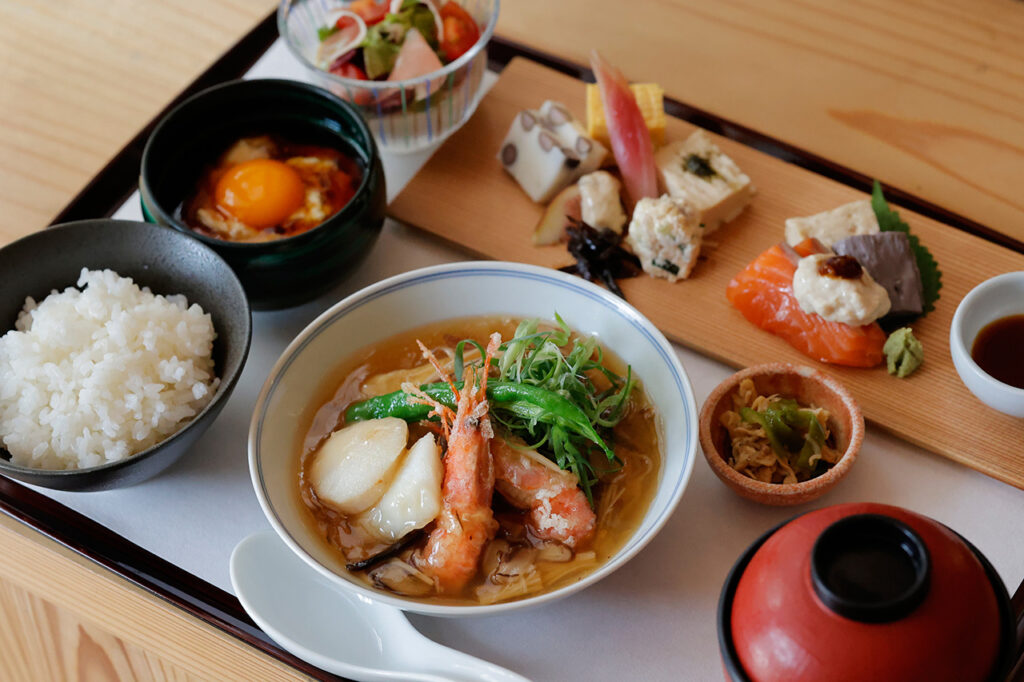
The "Umi-no-zen" set (3,600 yen) includes a main dish of seafood yuba with mushroom sauce, a side dish of yuba, yuba rice, and other dishes.

The owner, a native of Kagawa Prefecture, is a popular restaurant known for its homemade noodles that go down smoothly. The secret to the delicious taste is to let the dough, which is made from a unique blend of flour from Hokkaido and Kyushu, rest overnight at a low temperature. The noodles are slightly thinner and the broth is made with less dried sardines to meet the tastes of Kyotoites, but they also use soy sauce produced in Kagawa. The at-home atmosphere of the restaurant, which is easy to visit by yourself or with your family, is also very comfortable.
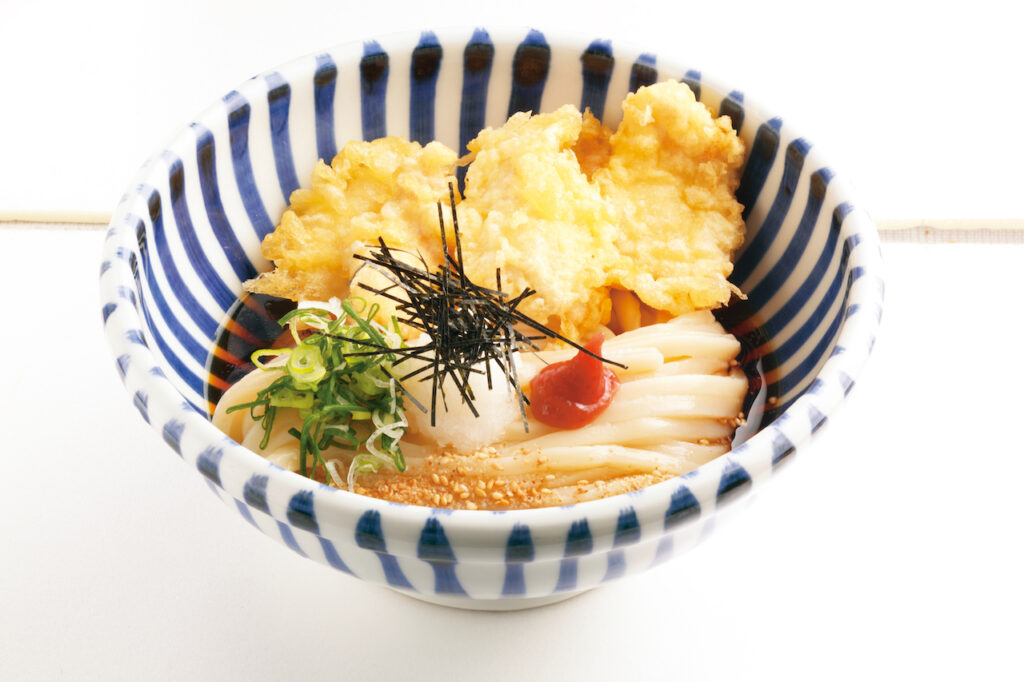
Kashiwa-ten bukkake (chicken tempura with broth): 900 yen. A large piece of chicken tempura is placed on top, and while it is hearty, the ume plum paste makes it a refreshing meal.

A long-established Western-style restaurant established in 1915. The restaurant is credited with having developed the world-famous teriyaki sauce, and has made a brilliant contribution to the establishment of Western food culture in Japan. The hamburger steak, a staple of Western cuisine, is served with a secret demi-glace sauce that takes a week to prepare, allowing you to fully enjoy the taste of Japanese-style Western cuisine that has been handed down for 100 years.
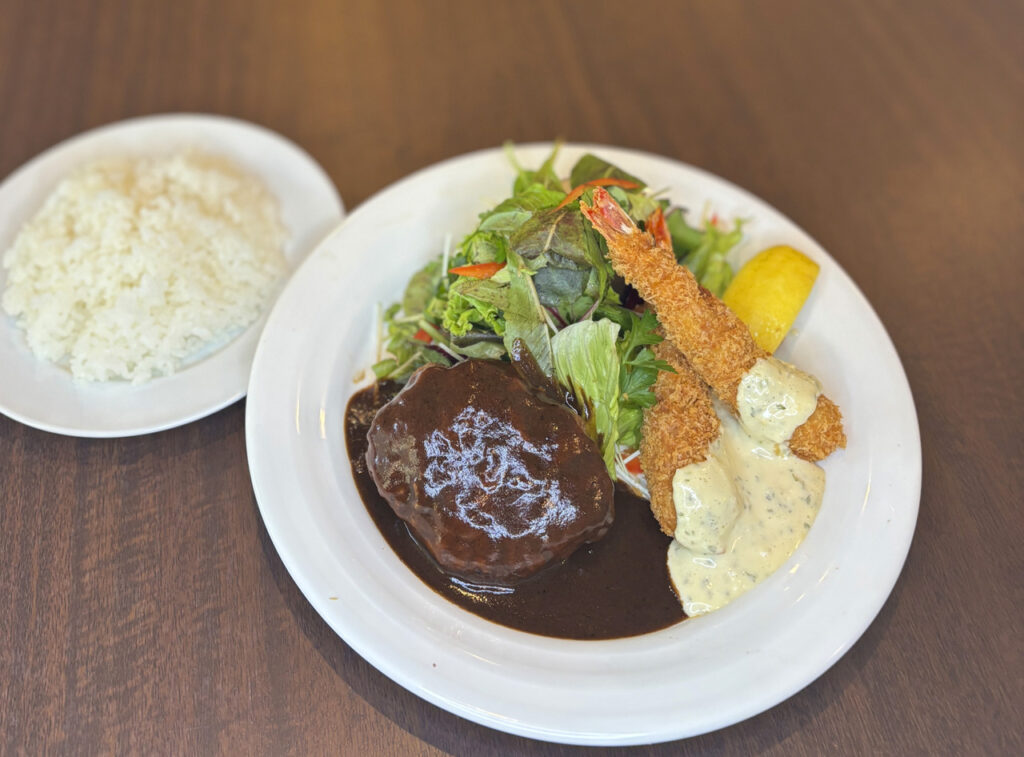
Weekday lunch menu, hamburger combo plate for 1980 yen. Includes a hamburger steak and your choice of another dish of fried shrimp, beef croquette, pork ginger, or butter-roasted salmon, and rice!

A long-established Western-style restaurant established in 1907. Its signature dish, fukuya rice, was created more than 80 years ago at the request of a geiko. The parched ketchup rice is topped with a fluffy egg, fresh tomatoes, green peas, and other toppings that are visually vibrant. The tomatoes are peeled and cut into small pieces, a thoughtful touch that is typical of the Hanamachi district.
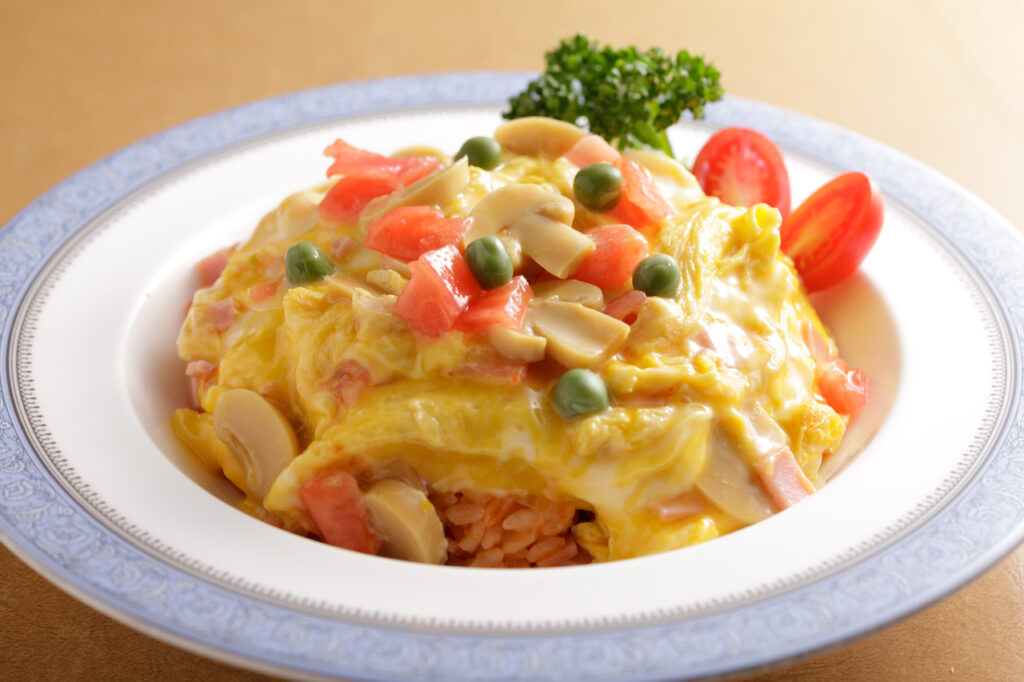
Fukuya Rice 980 yen. The salty taste of ketchup rice ham and the fresh acidity of fresh tomatoes linger on the palate.

The restaurant is a long-established Western-style restaurant loved throughout the ages for its delicate dishes that take a lot of time and effort to prepare, such as beef stew with domiglace sauce, which takes two weeks to prepare, and assorted crab cream croquettes and fried prawns, which boast the thinness of the raw bread crumbs that have been strained through the back. The restaurant also offers a sencha tea set for the end of lunch time. Lunch is served in two parts, from 12:00 p.m. and 1:30 p.m. Reservations are preferred.
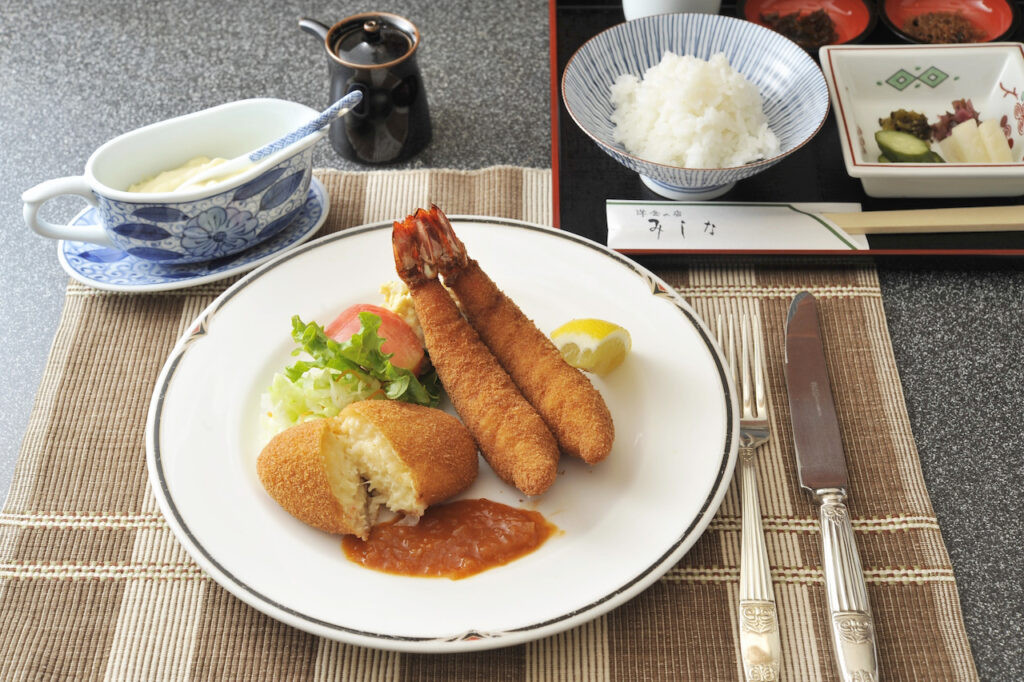
Crab cream croquette and fried shrimp for 2,850 yen. The set includes the royal combination of western fried food. The fine homemade breadcrumb batter is light to the touch.

The nostalgic and warm exterior of Rikimochi Shokudo Kato Shoten makes you want to visit on a whim. Since its establishment, the restaurant has been loved by local residents and tourists visiting nearby places of interest. The owner and proprietress run the store, which offers a wide variety of dishes such as noodles, rice bowls, and omu-rice (omelette). Japanese sweets such as o-hagi (rice cakes) and daifuku (sweet rice cake) are also available at the store, making it a good place to bring back home a souvenir.
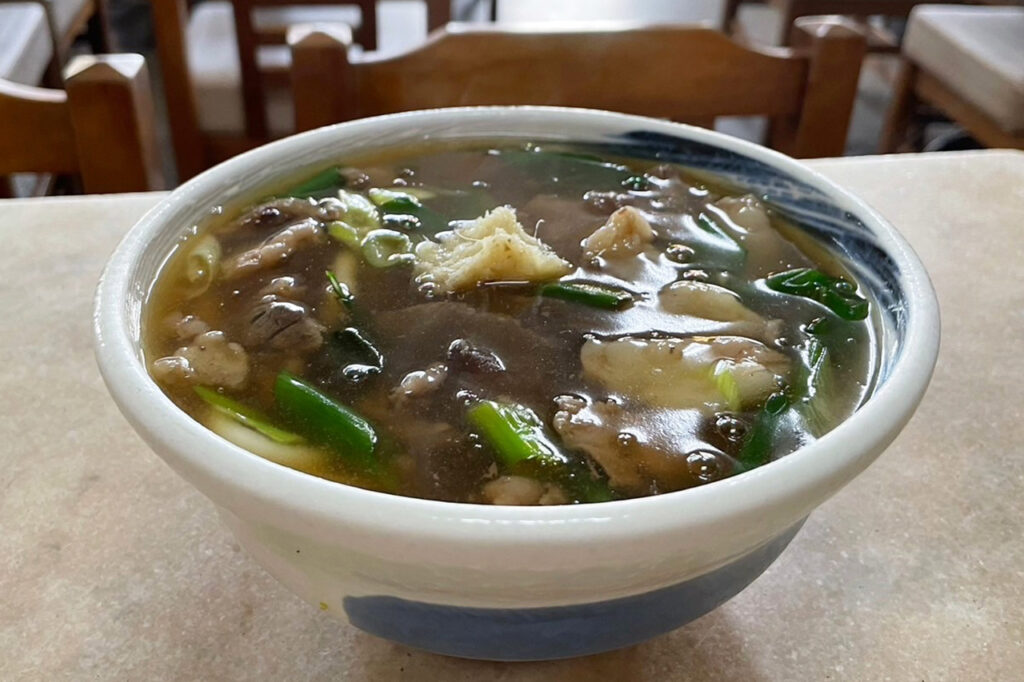
Beef Ankake Udon with plenty of beef tendon and green onion is 850 yen. From now on, you will want to warm up with ankake and ginger.

This restaurant is famous for its tuna bowl with special sauce. The thick, firm red tuna is tossed in a thick sauce with sesame oil and served with a half-boiled egg on top of hot rice. The memorable taste is addictive, and you will want to eat it again and again. For an additional 100 yen each, you can add kimchi hot sauce or yam, and for an additional 200 yen, you can add avocado or other toppings, allowing you to enjoy the tuna bowl to your liking.
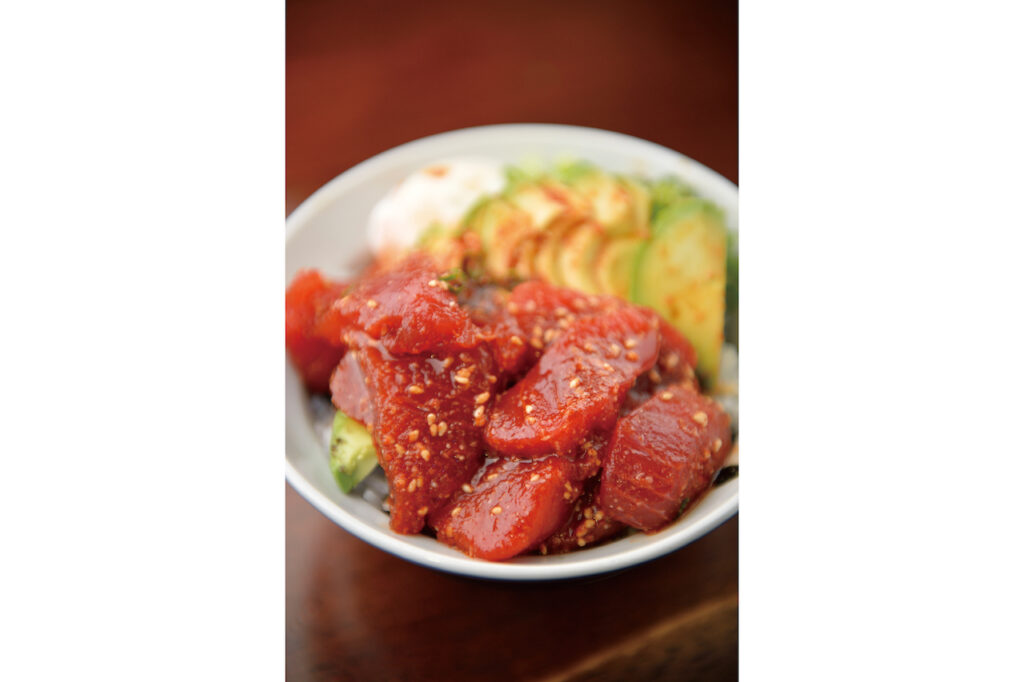
Tuna avoca rice bowl, 1,500 yen. Tare (sauce) made by combining vegetables and fruits with about 15 kinds of seasonings and aged for a week goes great with tuna.

A legendary udon specialty restaurant that began as a food cart. The specialty is thin udon noodles served in a thick broth. The broth is made from a mixture of seven kinds of bonito without using kelp, and its true value is demonstrated in curry udon as well as the signature product, Benkei Udon. The spiciness of the curry is softened by the flavor of the broth, making you want to drink every last drop.
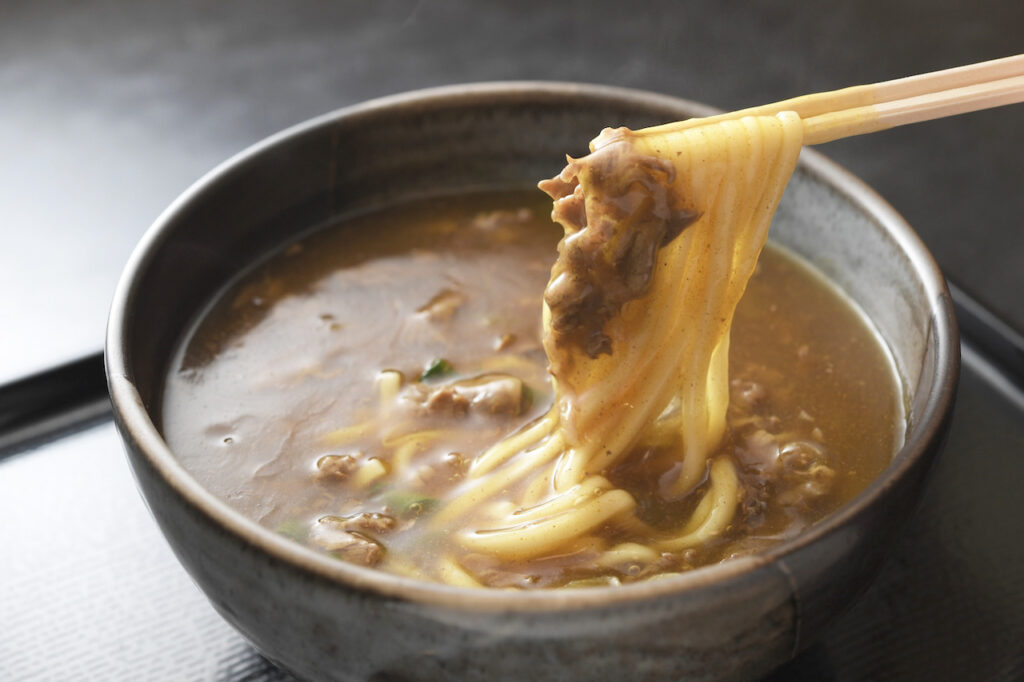
Curry udon noodles with meat: 1,050 yen. Soft thin udon noodles boiled in a net made of woven threads with a curry broth full of beef are delicious!

This is a famous Chinese restaurant where the chef pursues his ideal taste by paying close attention to every detail, from the selection of ingredients to the preparation of seasonings such as hot sauce, XO shoyu, and sweet soy sauce. The restaurant offers four different lunch courses, each of which includes an appetizer, main course, and dessert. The restaurant offers a wide range of dishes, from classic favorites such as Szechuan bean curd and chili prawns, to more upscale dishes such as braised shark's fin, making it a perfect choice for special occasions.
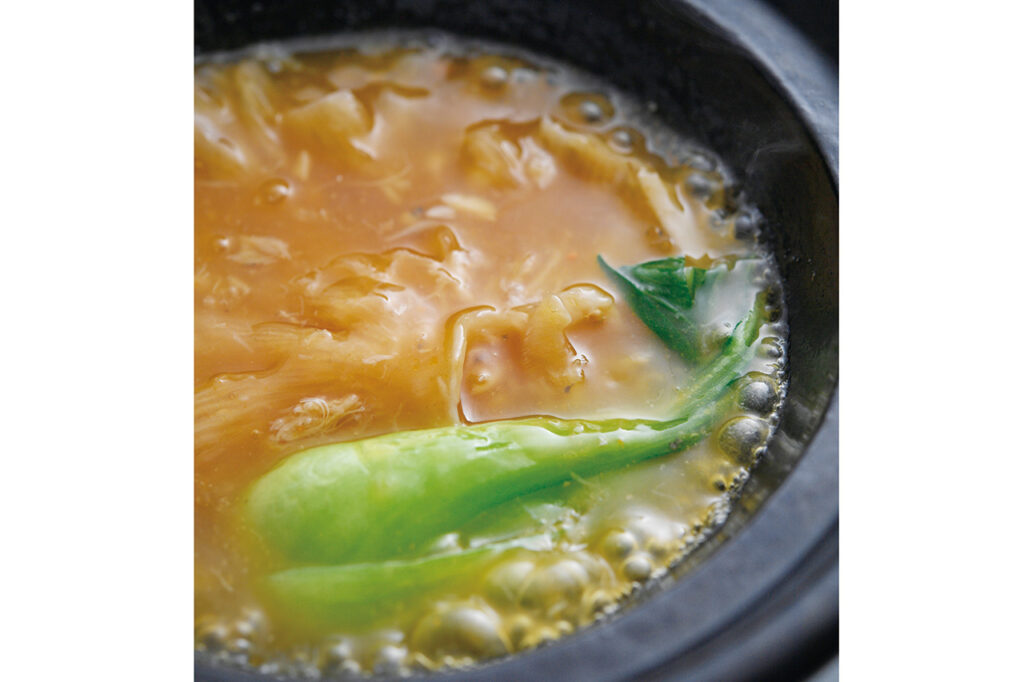
Shark's fin stew course: 4,200 yen. The tasty tender soup is irresistible. Includes appetizer, steamed soup, dim sum, shrimp mayo, dessert, and sweets.

Trattoria Annamaria is a restaurant that serves homemade pasta handmade by the owner, who trained in Italy. The handmade tagliatelle, made with semolina flour, takes three hours to complete, and has an outstanding texture and flavor. The popular lunch course for 2,750 yen comes with five different appetizers from the Emilia Romagna region of Italy, which will make you reach for the wine. The aromatic baguettes handmade by the owner are also noteworthy.
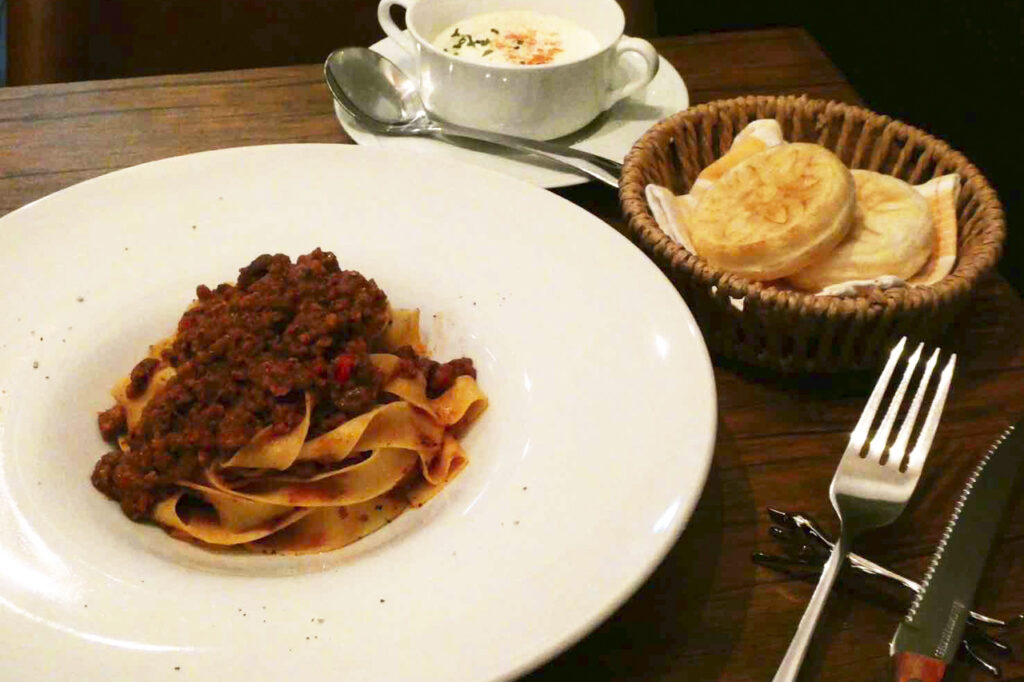
Lunch courses range from 1980 yen to 3 courses, and for an additional 500 yen for the 1980 yen and 2,750 yen courses, you can choose "Italy's No. 1 pasta chef Anna Maria's Bolognese".

This restaurant specializing in yuba cuisine is operated by Kyo Ryori Isobe, which aims to create a restaurant where yuba can be enjoyed casually, allowing customers to enjoy a variety of yuba dishes at once, such as freshly made yuba in the workshop on the second floor, sashimi, and deep-fried yuba. The thickness of the yuba, which is hand-pumped by artisans one by one, is carefully adjusted according to the cooking method. Each dish has a different texture, texture, and flavor, so you will never get tired of it.
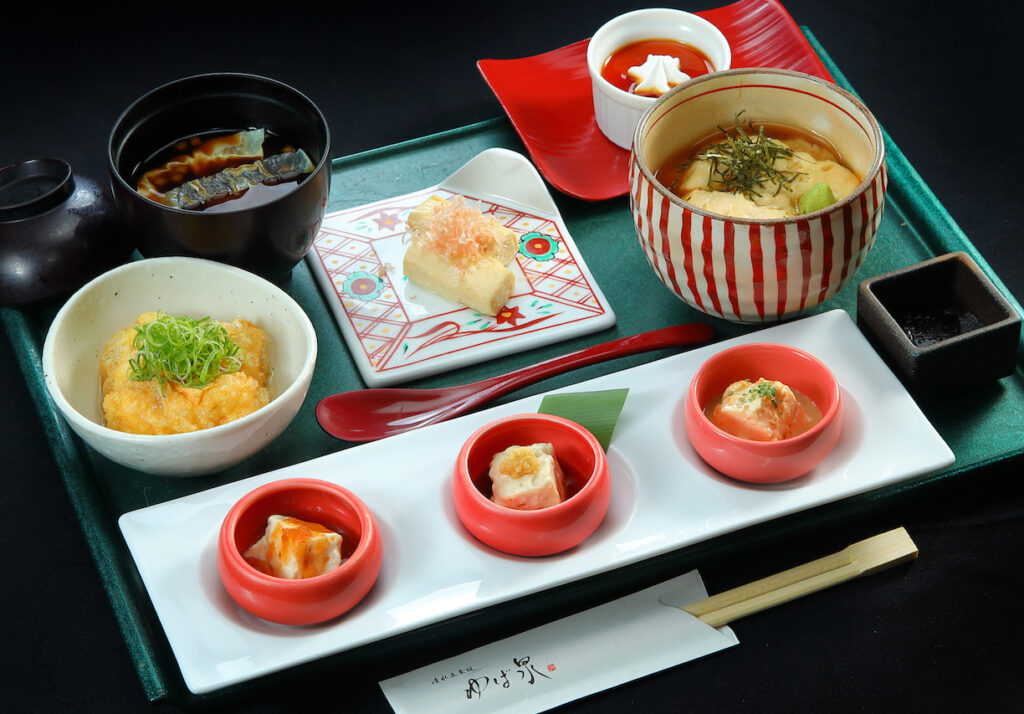
Kyo-yuba set for 2,420 yen. Enjoy all the dishes served at the restaurant, including kumikake yuba, takikomiai, yuba rice, etc.

This popular restaurant, which serves Bengali cuisine from the Bengal region of East India and Bangladesh, attracts fans from far and wide. The chef, who hails from Bangladesh, treats diners with complex and intense flavors created by his unique use of spices. Biryani, a representative of Bengali cuisine, is served with mutton, chicken, and vegetables on standby. Enjoy the authentic taste.
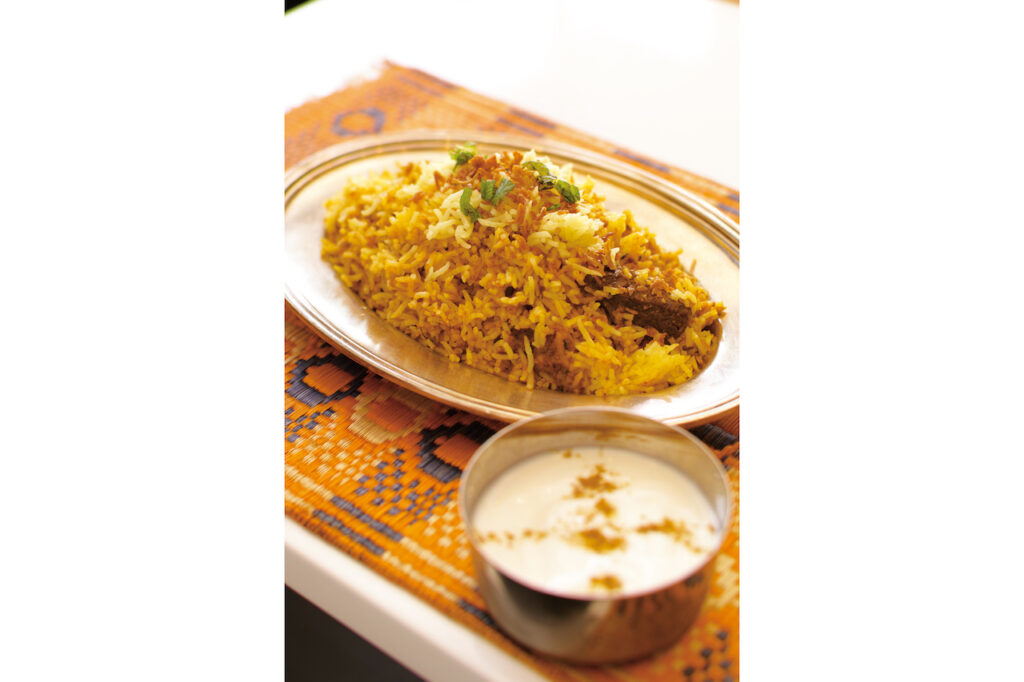
Mutton biryani, 1,600 yen; over 20 spices are used to create a complex and deep flavor.

Over 600 interviews per year! An order site carefully selected by the editors who knows Kyoto and Shiga.
nowOfficial LINE friend registration500 yen OFF coupon is being issued!
Distributed every Friday morning at 8:00 am! From new restaurant information to event information that we want to share with you, We deliver articles about Kyoto that are useful to know. About 20,000 people have registered.Click here to add a friend!
 News
News Feature article
Feature article Featured event
Featured event